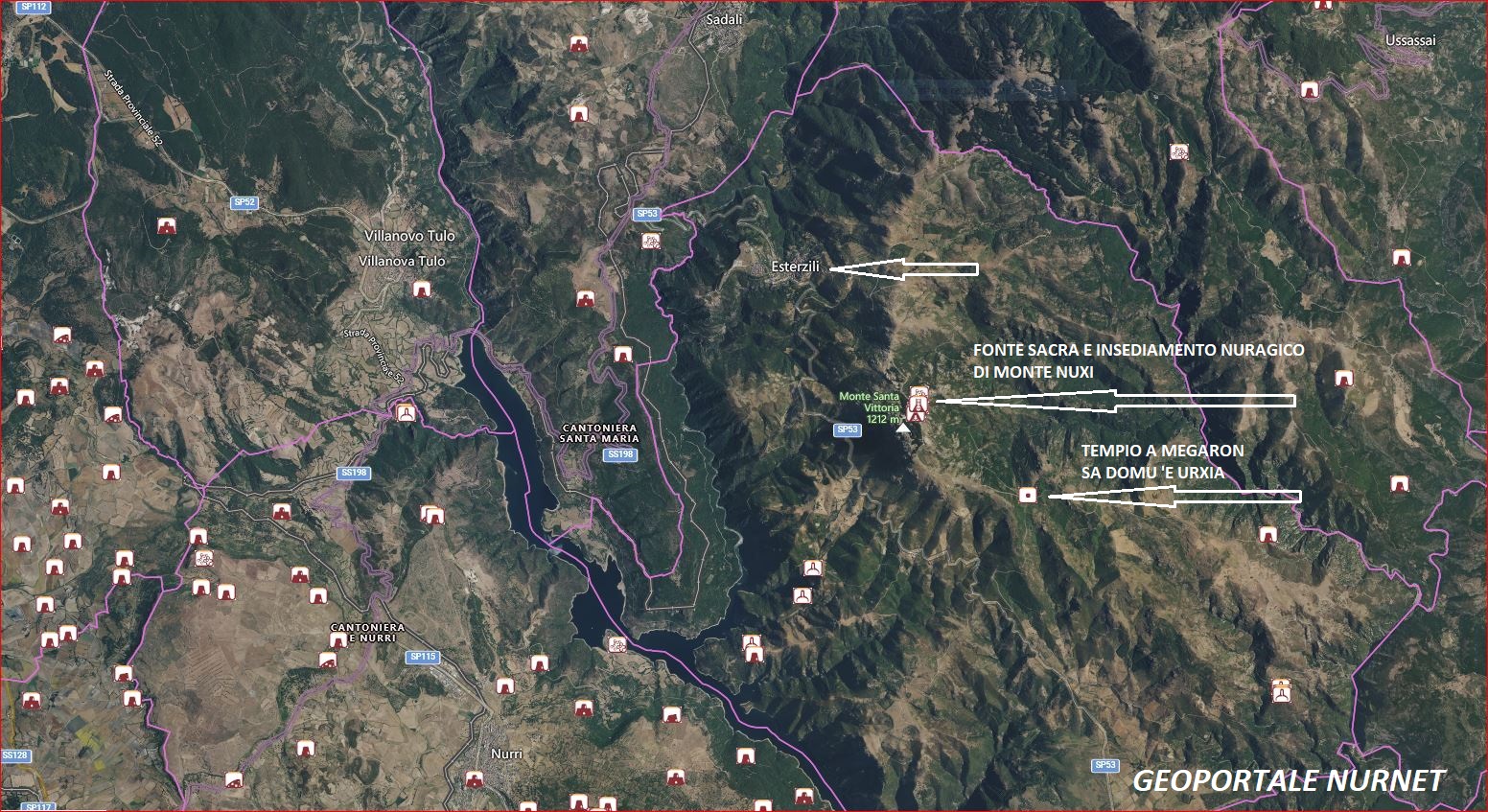“Almost at the center of the territory of Esterzili, on the southern spur that descends from the summit of Monte Santa Vittoria towards the east, in the locality of Currurueddi, on a small flat area that extends like an irregular terrace between the marked slopes of a rather rugged relief, there is a rectangular megalithic building, known by the locals as Domu ‘e Urxìa, meaning ‘House of the Evil Fairy.’ This prehistoric construction has captured the popular imagination both for the positioning of the structure in an area of difficult access and for the curious and unique shape of the architectural structures, so different from the usual recurring modules of nuragic megalithism. In fact, the shepherds, farmers, and cattle thieves who pause to observe the linearity of the monument remain almost spellbound by an ancient widespread belief that recalls Urxia, the cruel witch who keeps inside her house of massive stones a barrel full of gold and silver buried in the inaccessible underground of the enchanted building next to another barrel where deadly bloodthirsty flies lurk: ‘Is Muscas macceddas’ or ‘the assassin flies.’ The brave violators of the treasure, or ‘Su Scusorxu,’ if they want to seize the alluring loot, must guess in which barrel the flies are lurking to avoid falling victim to the malice of the relentless and gigantic witch. It is clear that this popular belief is directly derived from elements of classical mythology that has localized in this temple, also enclosed by an external elliptical wall, probably one of the traditions of the myth of Niobe, interpreted in a Sardinian way.
The building of Domu ‘e Urxìa is located at an altitude of 978 meters above sea level, near an old cattle track for transhumance, at the intersection of the track towards the jump of Cuccurueddi, in an area of high pastures valued by shepherds and characterized by the intense aroma of thyme (armidda). Not far from the building, on the ridge and slopes of Monte Santa Vittoria, in an area of several hectares, there are also the ruins of a remarkable nuragic village of circular huts, enclosed within a space partially surrounded by cyclopean walls, a nuraghe, a curious megalithic enclosure, a sacred well at the spring of Monti ‘e Nuxi, famous for its very fresh waters. The area has therefore been inhabited by the Nuragic people since the most remote antiquity and was already frequented between the second and first millennium B.C. The rectangular temple has an elongated rectangular shape and is built with enormous blocks of grayish crystalline schist, locally called ‘perda zippòrra,’ perhaps because it is the same material once used for honorific and funerary cippi, as well as for covering small bridges and rustic shelters…” (Comune di Esterzili)
The photos of the temple at Megaron Sa Domu ‘e Urxia are by Giovanni Sotgiu and Maurizio Cossu. Those of the sacred spring of Monte Nuxi are by Ascanio Saddi, Gianni Sirigu, and Andrea Mura – Nuragando Sardegna.













